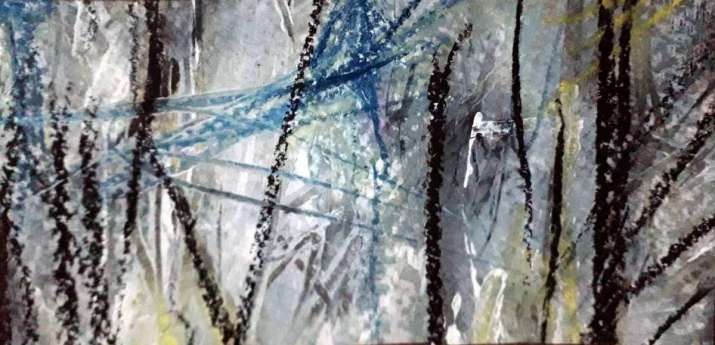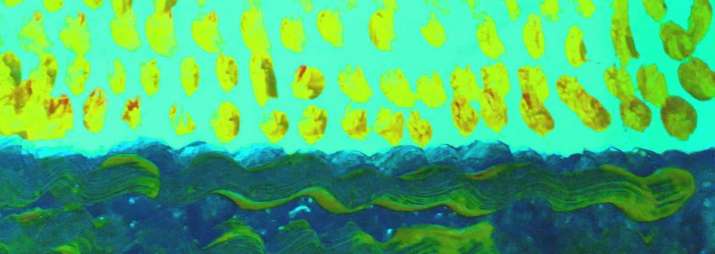FEATURES|COLUMNS|Bringing Mindfulness to Life
Promise to Make the Most of Your Life
 In the Woods. Image courtesy of the author
In the Woods. Image courtesy of the authorA couple of years ago, my bedside reading was A God in Ruins by Kate Atkinson. Hugh is 84 and on a road trip with his granddaughter Bertie, visiting the graveyard in which his wife and other family members are buried. Naturally, the conversation turns toward Hugh’s own wishes for the disposal of his body:
“A woodland burial,” he said. “No name, nothing, just a tree. An oak, if you can, but anything will do. Don’t let your mother be in charge.”
Death was the end. Sometimes it took a whole lifetime to understand that. . . . “Promise me you’ll make the most of your life,” he said to Bertie.
“I promise,” Bertie said, already at twenty-four knowing it was unlikely she would be able to do so.
I read and re-read that last sentence, savouring this honest and sobering assessment of the human aptitude for following through with a commitment. But what does it actually mean: “Making the most of your life”? How would I know whether I am doing or failing to do so?
In the middle of that night I woke from a dream in which I was watching an electrifying modern dance performance in a large Buddhist temple, organized by my first Dharma teacher, Dhammaloka. Why was he suddenly turning up in my dream consciousness? Thirty-five years ago, we were both fired up by a vision of the integration of creative expression and spirituality. This took me along a path of in-depth exploration of emerging forms of contemplative art and Buddhist ritual that eventually led to an arts-based PhD. I was following some kind of calling. These days, the main thrust of my life consists of mindfulness teaching, training, and one-to-one mentoring and coaching. Equally absorbing; perhaps more obviously useful than arts activities and marginally more lucrative. But some inner guardian will wake me up, literally, if I am in danger of abandoning this earlier key commitment in my life. For me, it seems that in order to be certain that I am making the most of my life, some art work, writing, music, and dancing must be part of it.
Perhaps it goes without saying, but following a sense of purpose and direction, and sensing some kind of meaning in life seems to be part of “making the most of it.” But perhaps the purpose of life, mine and yours, is too subtle and mysterious to be assessed in any obvious way, or even to be expressed in prose. I often use this poem by Denise Levertov in my mindfulness courses and retreats to invite reflections on the wider context of practice:
The Secret
Two girls discover
the secret of life
in a sudden line of
poetry.
I who don’t know the
secret wrote
the line. They
told me
(through a third person)
they had found it
but not what it was
not even
what line it was. No doubt
by now, more than a week
later, they have forgotten
the secret,
the line, the name of
the poem. I love them
for finding what
I can’t find,
and for loving me
for the line I wrote,
and for forgetting it
so that
a thousand times, till death
finds them, they may
discover it again, in other
lines
in other
happenings. And for
wanting to know it,
for
assuming there is
such a secret, yes,
for that
most of all.
Young people remind us of the possibilities of choice regarding our life’s direction. With advancing age, the well-worn grooves in our brains and the established structures and responsibilities of our lives can diminish the ease of manoeuvring into possible new avenues. On the other hand, life experience may have given us clarity about our core values, which is a prerequisite for making decisions. Clearly, alignment with values is crucial to the warp and weft of a well-spun life. People become unhappy when their sense of lived purpose becomes tenuous. Clients who turn to me for coaching are often motivated by a sense of intensely painful disconnection with their potential.
A gregarious woman has devoted her life to a man who doesn’t communicate with her. She stays with him until their sons leave home. She files for divorce and is on the brink of freedom, but now finds herself held back by their two dogs, one of whom is close to the end of his life. Responsibility for other beings seems to tie her, again and again. She aches with frustration. She moves through the room, loosening it all up, embodying and trying out different viewpoints, clarifying her core values. What have the dogs to say about this subject of freedom and responsibility, or her sons, her best friend, the woods, the sky? What emerges for her is this: there is no question of abandoning the dogs. Her task is to find freedom within her love for them. New solutions emerge: finding dog carers other than her husband, for example.
 Breathe Easy. Image courtesy of the author
Breathe Easy. Image courtesy of the authorCoaching sessions often end with a commitment to find or make something that symbolizes an emerging new direction. For my client, the image of a burning candle arose spontaneously, for others it may be the archetypal image of a majestic, deeply rooted tree; or a white bird, soaring high above the landscape. Sometimes it is idiosyncratic: a fluffy teddy bear. Or an image aligned with the Buddhist or other tradition, such as Green Tara. What is important is the sustained and repeated connection with the charge it gives you, stirring a longing and confidence strong enough to override habitual doubt and addiction to the comfort of the familiar.
I think we tend to move toward a fuller and more satisfying experience of life in the future, and miss the moments of alignment when they actually happen. I wonder: maybe we are afraid that if we had the feeling that we are making the most of our lives, it could be over?
Last week, I facilitated the first training weekend in the new workshop space my husband and I recently acquired in Glasgow. I had put a fair amount of effort into furnishing it with eco-friendly equipment: meditation cushions filled with buckwheat husks, and bio-degradable yoga mats. I had given a lot of attention to the colour scheme, to complement the tasteful decorations of the previous owner, particularly the deeply satisfying dark turquoise of the woodwork. There was some of my artwork on the walls, and a couple of my students had helped to assemble some flatpack furniture. Another of my students made delicious food for lunch. When we sat down to meditate, I became aware of intense pleasure circulating through my body/mind. This, I thought to myself, is what integration feels like; a coming together of several core values: community, learning, beauty, mindfulness, contribution. A sense of “we” rather than “me.” We may have exhibitions in the space, dance in it, and make it into a resource for conscious and socially engaged living. But for now, I allowed myself to feel and celebrate that sense of arriving at a place of “the most.”
See more
Living Mindfulness
Holy Isle Centre For World Peace And Health
Related features from Buddhistdoor Global
Yielding to Metta
The Wisdom of Grief and Anxiety – Building a Life of Meaning Outside of the Social Media Trap
Discovering Radical Happiness














